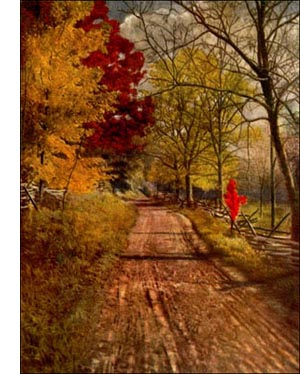Willow Oak Tree
 Willow Oak (Quercus Phellos, Linn.)-A graceful, quickgrowing tree, 60 to 80 feet high, with slender branches that form a conical, round-topped head. Bark rather rough, reddish brown, with scaly surface; young trees, smooth. Wood pale, red-brown, coarse grained, strong, soft, heavy; sap wood lighter in colour. Buds small, acute, brown. Leaves alternate, leathery, short petioled, 2 to 5 inches long, linear like willow leaves, but obtuse at apex and base; upper surface bright green and glossy; lower pale green., dull, smooth; autumn colour yellow. Acorns biennial, not numerous, solitary or paired on short stalks; nut 1/2 inch across, hemispherical, downy, yellowish brown, set in shallow saucershaped cup: scales thin, ovate, dark reddish brown, hairy; kernel orange, bitter. Preferred habitat, low, wet borders of swamps. Distribution, New York to northeastern Florida (in the low maritime region just back from the coast); along the Gulf into Texas; north in low ground into Missouri, Kentucky and Tennessee. Uses: A fine shade and ornamental tree for Southern cities. Wood used in construction.
Willow Oak (Quercus Phellos, Linn.)-A graceful, quickgrowing tree, 60 to 80 feet high, with slender branches that form a conical, round-topped head. Bark rather rough, reddish brown, with scaly surface; young trees, smooth. Wood pale, red-brown, coarse grained, strong, soft, heavy; sap wood lighter in colour. Buds small, acute, brown. Leaves alternate, leathery, short petioled, 2 to 5 inches long, linear like willow leaves, but obtuse at apex and base; upper surface bright green and glossy; lower pale green., dull, smooth; autumn colour yellow. Acorns biennial, not numerous, solitary or paired on short stalks; nut 1/2 inch across, hemispherical, downy, yellowish brown, set in shallow saucershaped cup: scales thin, ovate, dark reddish brown, hairy; kernel orange, bitter. Preferred habitat, low, wet borders of swamps. Distribution, New York to northeastern Florida (in the low maritime region just back from the coast); along the Gulf into Texas; north in low ground into Missouri, Kentucky and Tennessee. Uses: A fine shade and ornamental tree for Southern cities. Wood used in construction.We think of oaks as being sturdy and rugged in their expression, leaving grace and delicacy to willows and birches, and such. Here is an oak whose leaves are willow-like in form, size and texture; and they hang on supple, pendant branches, like a willow's. The dainty acorns in their saucers are often needed to convince observers that the tree is truly an oak. But only the young trees are willowy in habit. The oak characters soon assert themselves.
Naturally, willow oaks grow on the margins of swamps, but they thrive as a street and shade tree, and are especially beautiful in the autumnal yellow of their foliage. A large tree grows in John Bartram's garden in Philadelphia; a small one seems to be holding its own without protection in the Arnold Arboretum at Boston, though its shoots are often nipped by frost.